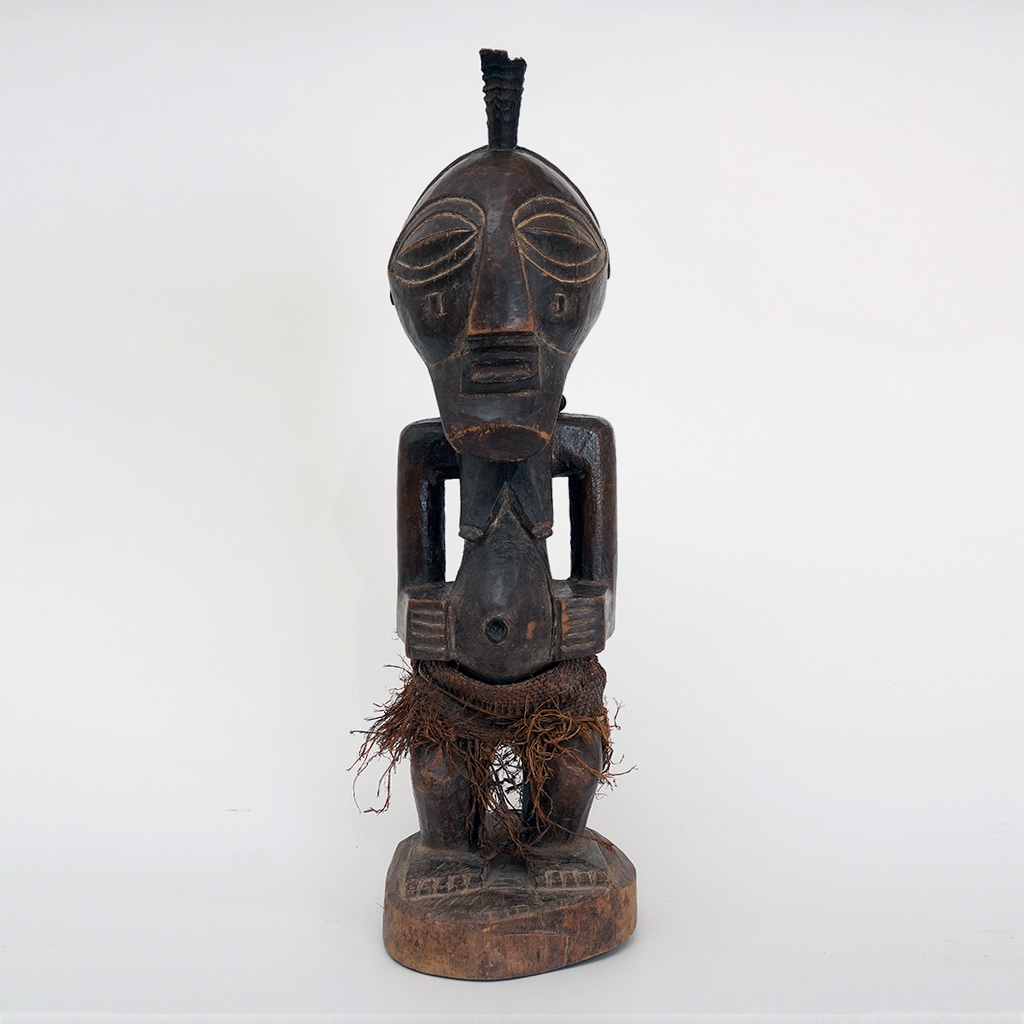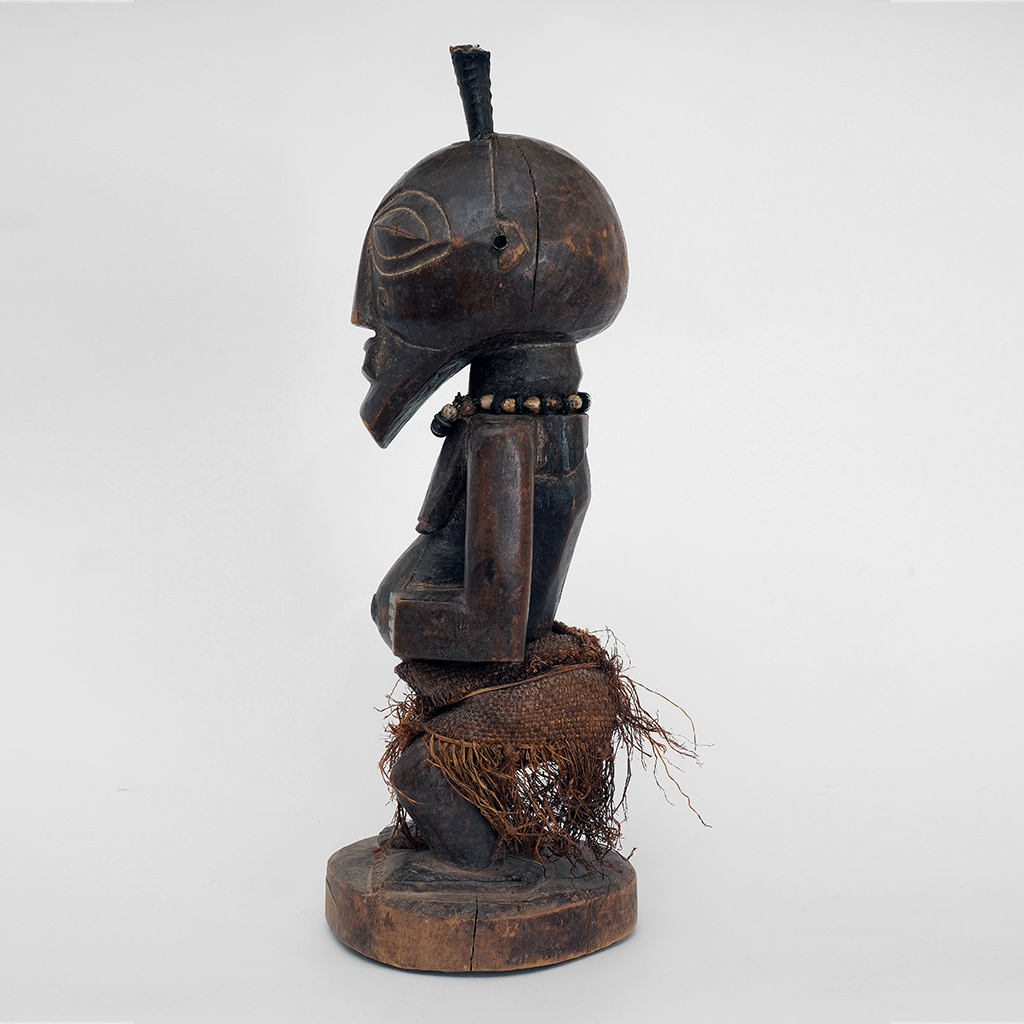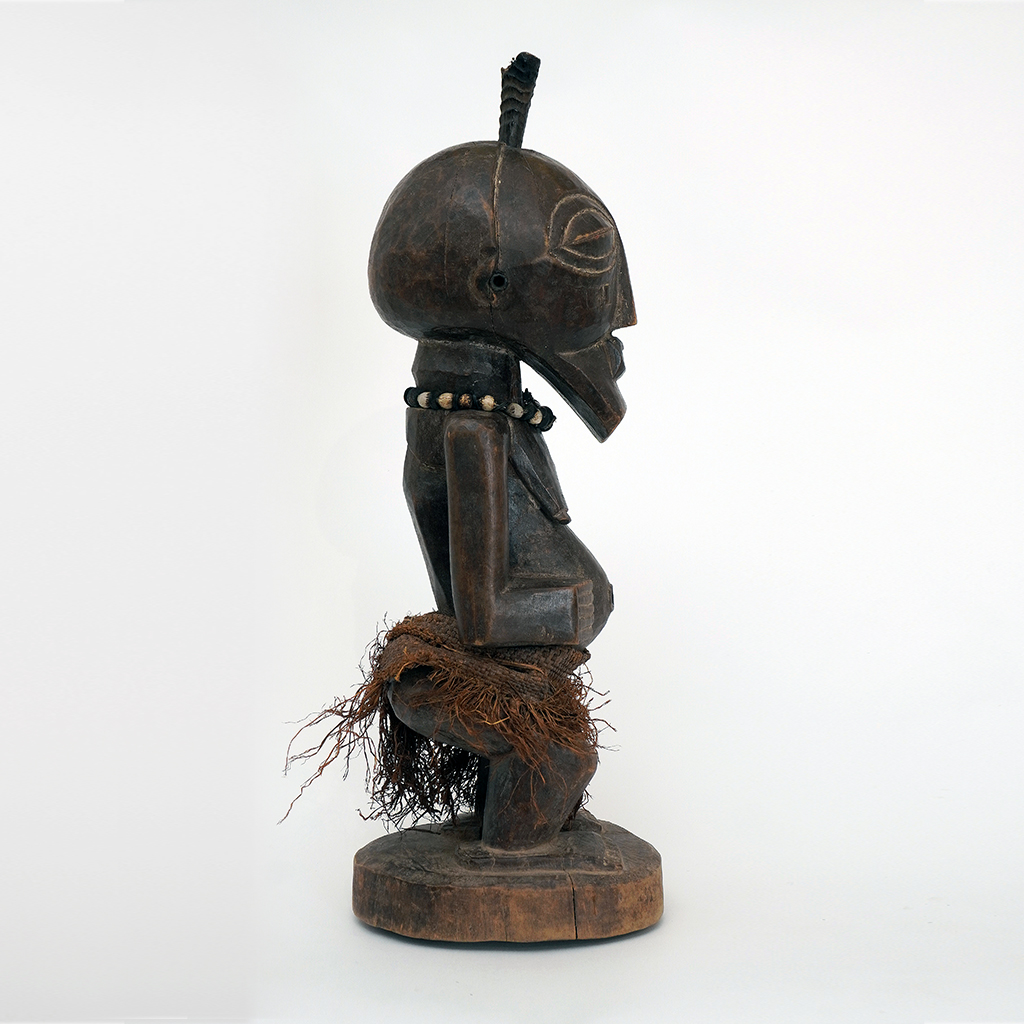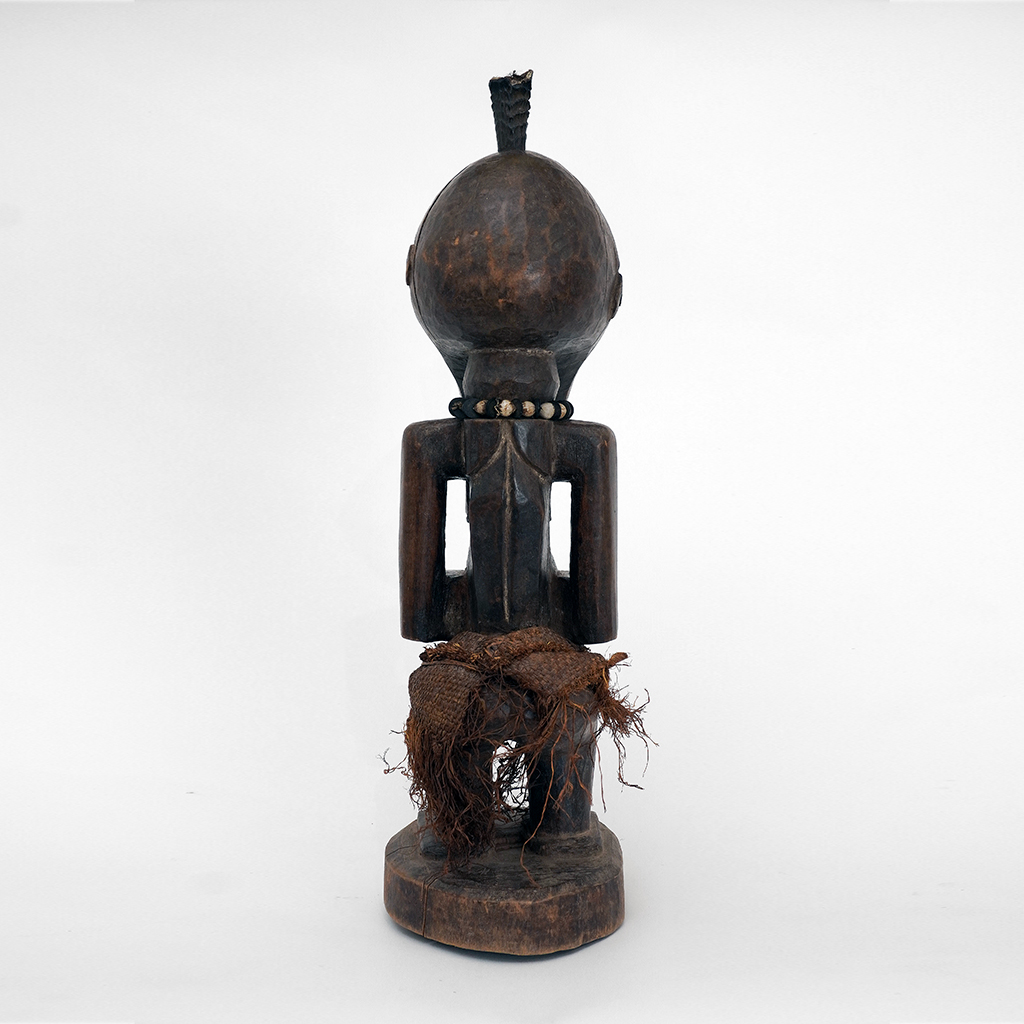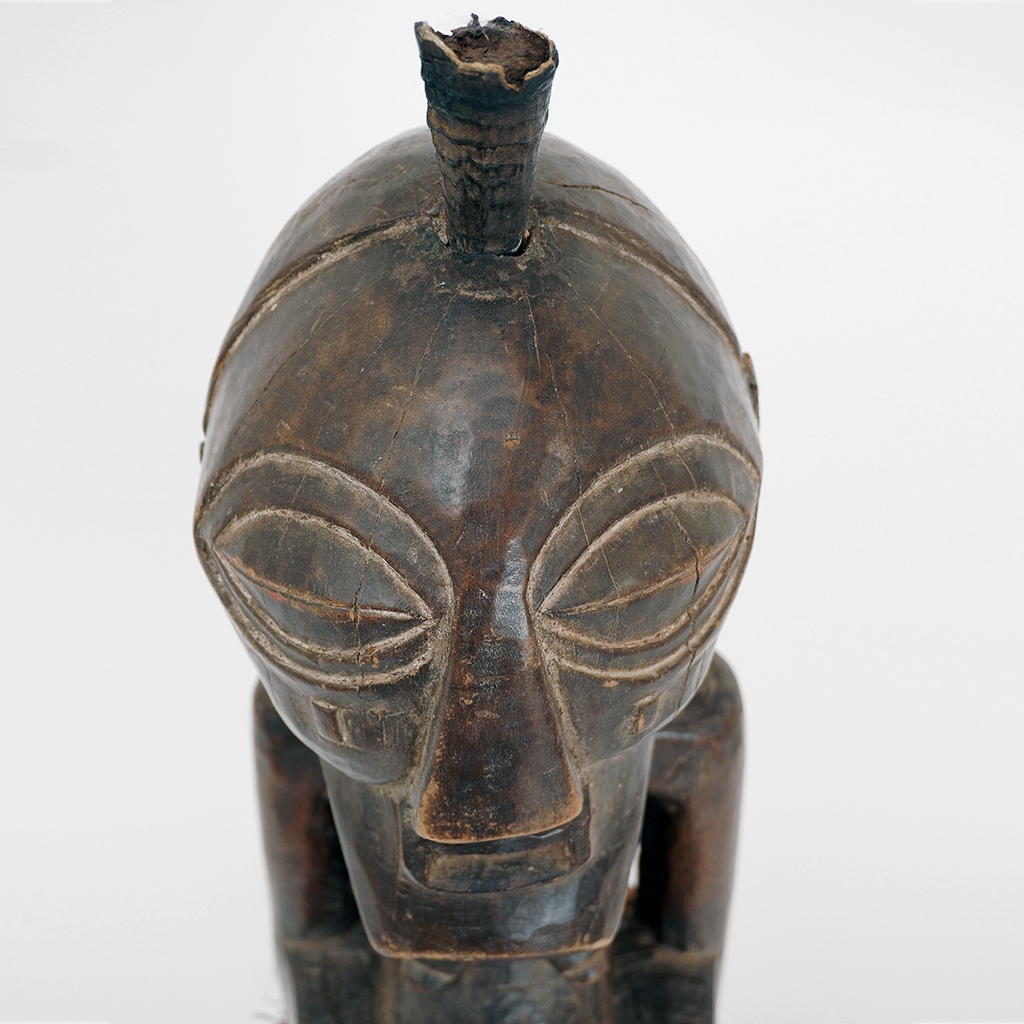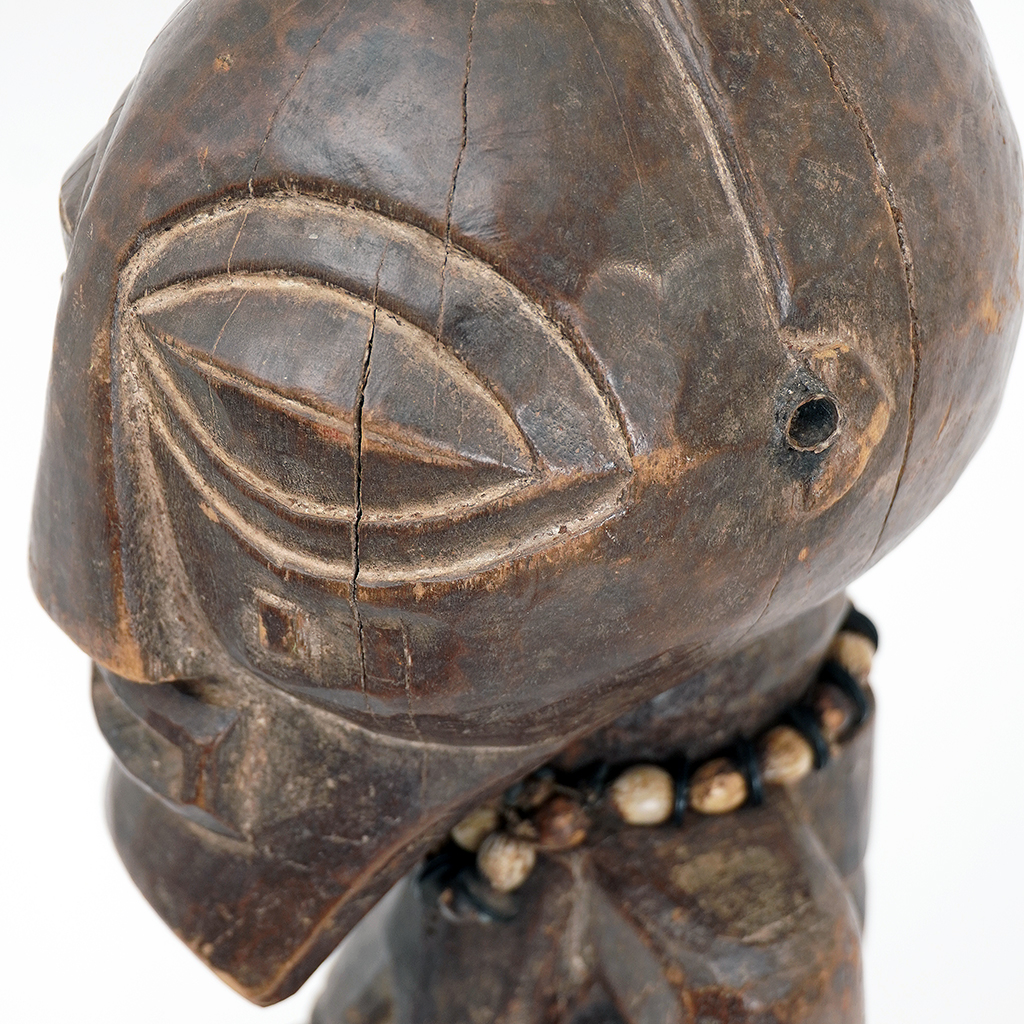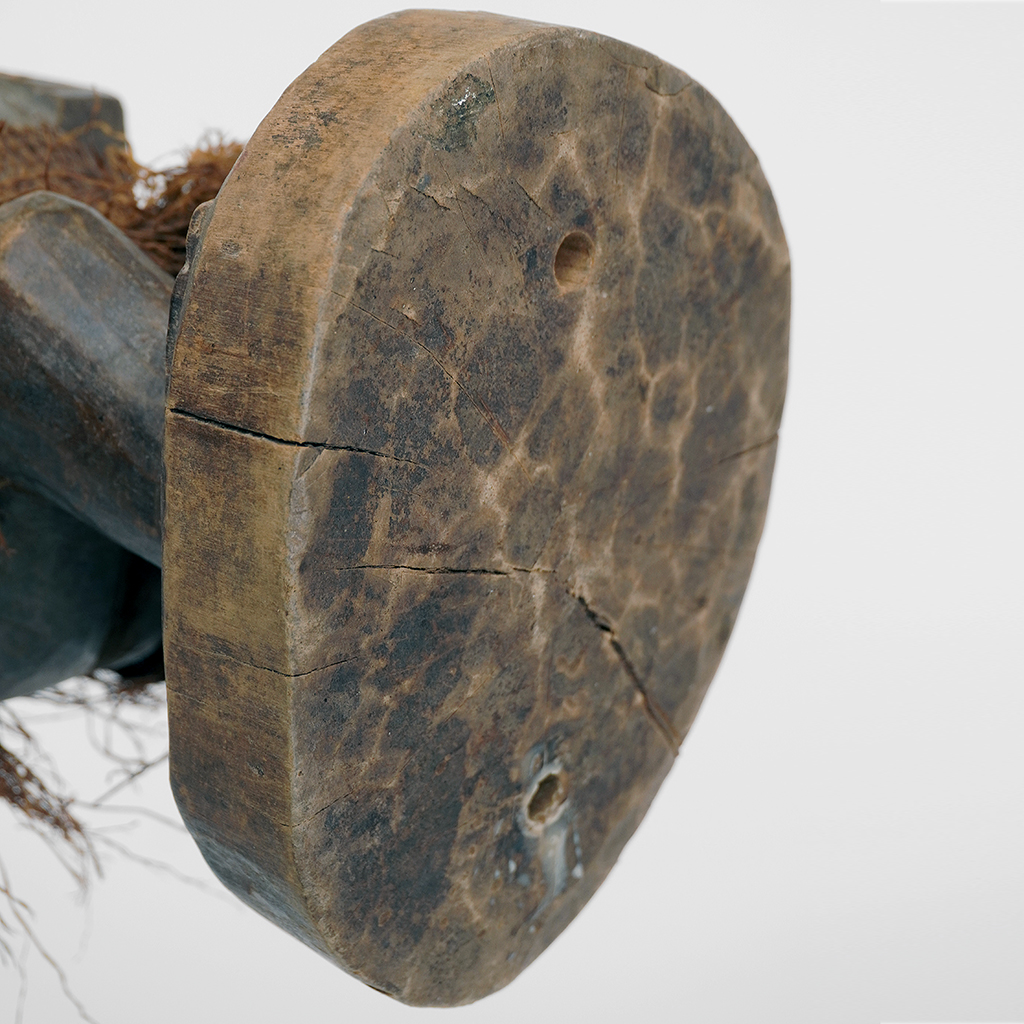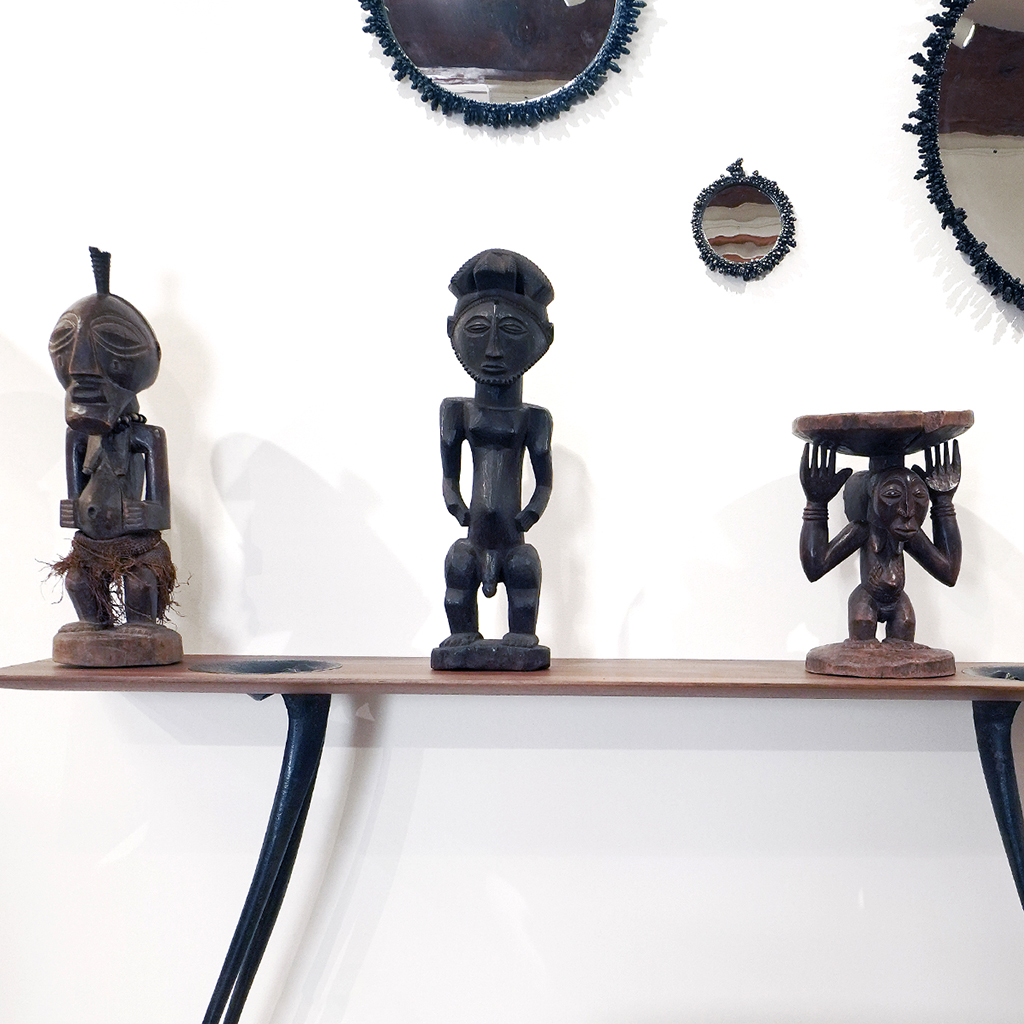STATUE SONGYE / NKISI
Référence :
Nkisi statue from Songye country representing the primordial ancestor of this people from the south-east of the Democratic Republic of Congo (early twentieth century). Pfaff Collection.
Length : 5.91 in / 15 cm
Height : 20.47 in / 52 cm
Width : 7.48 in / 19 cm
Weigth : 6.61 lb / 3 kg
Contact us / Get in touch
Origin: Democratic Republic of the Congo
Period: Early Twentieth Century
Materials: Wood, hemp, glass bead and antelope horn
Historical: The Songye country is located in the southeast of the Democratic Republic of Congo (capital: Kinshasa)
It is a large territory close to another great people, the powerful Luba kingdom, with whom they share similar spiritual concepts and plastic solutions.
This statue is built according to very cubist canons, specific to this style.
Called Nkisi, it is the representative of the primordial ancestor, which can be both female and male. The head is classically large, with oversized eyes – because they see everything, both the visible and the invisible. Here, through her prognathic chin, she takes the shape of the classic Songye mask, the Kifwebe. The nose is very blunt and flattened, opening onto a broad, open forehead with a marked hairline. The bust is almost entirely occupied by the very square shoulders, the arms, separated from the body, embrace the very prominent belly as a sign of fertile prosperity. The arms allow the statue to be carried above the head to be mounted by other members of the community. The very short legs, also very cubist, are carried by very wide feet on a pedestal integrated into the statue.
She still wears her raffia loincloth. Sex is always figurative, a symbol of fertility and joy within the community. At the top of the head, an antelope horn, stuck in the skull, signifies that the village healer, called nganga, has “charged” the statue so that the medicinal potions it contains will protect its owner. No statue exists as such if it has not received the spiritual charge from the nganga which alone gives it its beneficial power.
These statues can be found within a family as well as in the house of spirits, or that of the nganga, the statutory guarantor of the well-being of the community. In this case, they are larger and can reach 1.50 m. They then carry a large number of loads, in the navel, around the neck, waist, legs, made of shells, animal skins, other horns, seeds, small baskets,…
These Nkisi statues have a fundamental role as a representative of ancestors, and primordial as protectors of the community. The Nkisi IS the spirit of the Songye.
Origin: PFAFF Collection, a French private collection built up by an airline pilot after the Second World War.
Marcel Pfaff (1910-1984), fighter pilot during the 2nd World War, demobilized in 1945, his friends of the time who are also his mentors, Dieudonné Costes and Maurice Bellonte, convince him to join civil aviation and the young company Air France ex-Aéropostale since 1933. For several years, it operated the Toulouse/Brazzaville route (with no less than 14 stopovers Dakar-Baloma-Conakry-Robertsfield-Abidjan-Accra-Lomé-Cotonou-Lagos-Douala-Libreville-Port Gentil-Pointe Noire-Brazzaville).
His many contacts on the spot allowed him to perfect his taste for African art and his attraction to strong pieces that were called fêtiches: Nkisi of the Songye, Nkondi with nails of the Bakongo, the Luba, LwaLwa, Yaka statues,… he quickly became very well known to the “antique dealers” of Brazzaville and Kinshasa (separated by the Congo River) who brought him the pieces directly to the airport – even if he was able to go twice to the East of the country, to Kisangani and Lubumbashi, which in the 50s and 60s represented a real adventure, in this country in full mutation, moving from the tutelage of Belgium to independence in often dramatic political shocks.
Later, he sailed the North Atlantic and Japanese routes, more compatible with his family life, becoming captain on the prestigious 747, before retiring in 1974.

